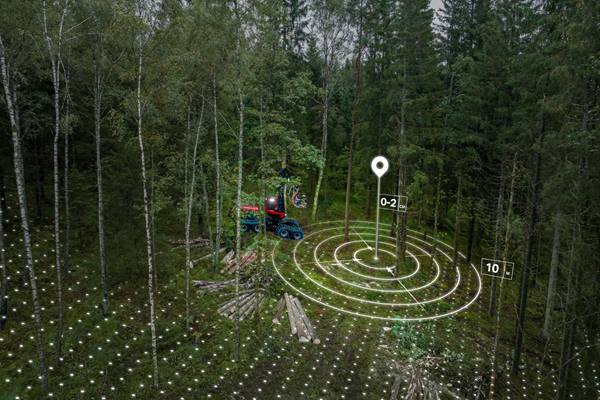When fire strikes
Tenerife’s forests are more than landscapes. They are living systems that stabilize steep volcanic slopes, shelter biodiversity and sustain the island’s tourism and community life.
In 2023 a massive wildfire tore through Tenerife’s northern slopes. Protected natural areas were scorched. Roads and parks were closed. The skies filled with smoke. Over 26,000 people were evacuated from towns and villages. The island slowed to a halt.
After the fire, vast stands of pine trees were left dead and dangerously unstable, many towering over roads, trails and infrastructure. Their roots no longer held the soil, and on the island’s steep slopes the risk of collapse was high. With the rainy season approaching, there was a growing threat of landslides, floods and further environmental damage. To prevent disaster, the island’s forestry teams declared an emergency and mapped out high-risk zones for immediate intervention — all within protected natural parks and conservation areas.
Tenerife’s forests are more than landscapes. They are living systems that stabilize steep volcanic slopes, shelter biodiversity and sustain the island’s tourism and community life.
In 2023 a massive wildfire tore through Tenerife’s northern slopes. Protected natural areas were scorched. Roads and parks were closed. The skies filled with smoke. Over 26,000 people were evacuated from towns and villages. The island slowed to a halt.
After the fire, vast stands of pine trees were left dead and dangerously unstable, many towering over roads, trails and infrastructure. Their roots no longer held the soil, and on the island’s steep slopes the risk of collapse was high. With the rainy season approaching, there was a growing threat of landslides, floods and further environmental damage. To prevent disaster, the island’s forestry teams declared an emergency and mapped out high-risk zones for immediate intervention — all within protected natural parks and conservation areas.
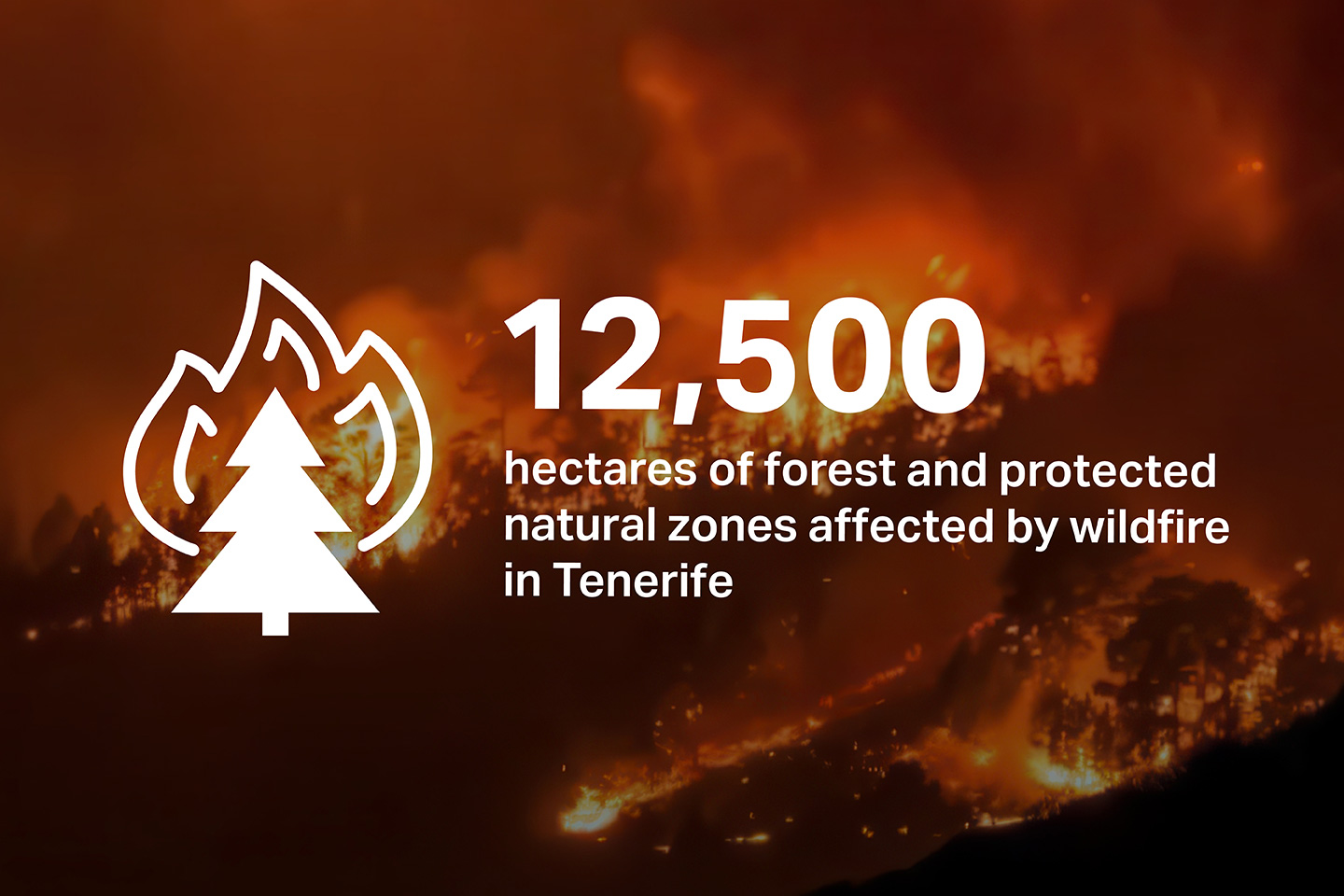
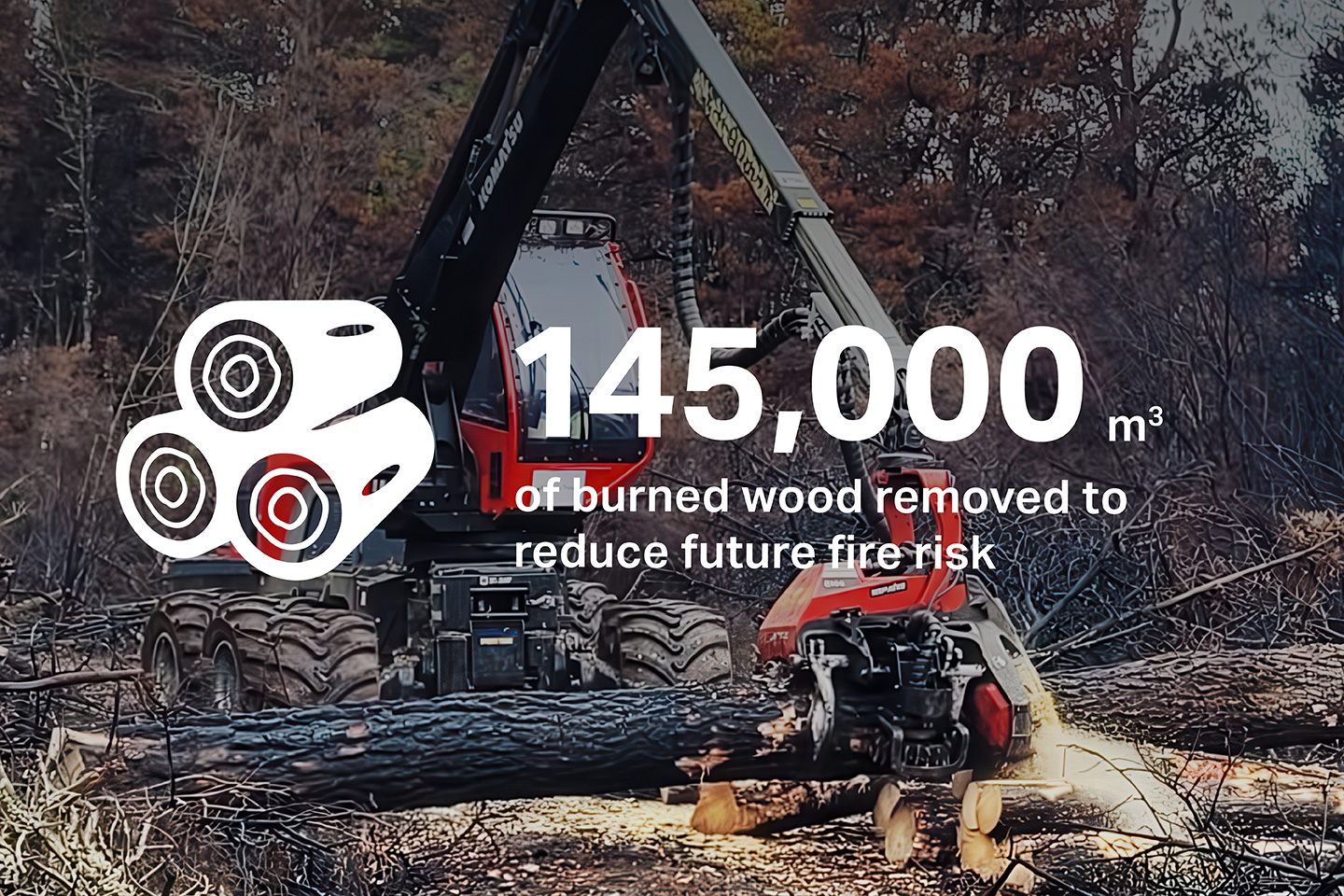
When machines make protection possible
To tackle this complex challenge, Tenerife’s environmental teams turned to technology. Komatsu’s machines were to play a big part in solving it — not as tools for timber, but as instruments for ecological recovery and protection.
The local government gained support from the community by making it clear that the machinery would support environmental recovery and wildfire prevention. Once that was understood — and the machines demonstrated their ability to work with precision and care for the surrounding ecosystem — public support grew significantly.
The island’s forestry services brought in Komatsu’s harvester and forwarder to safely remove hazardous trees from steep, fire-damaged slopes within protected natural areas.
The intervention zones were mapped using digital terrain analysis, which identified where machines could operate safely and where manual work was necessary. This information was integrated into Komatsu’s Smart Forestry system, allowing operators to follow pre-planned routes and coordinate log collection with precision and care.
Steep challenges
On steep, forested slopes, the Komatsu harvester processed fire-damaged trees with surgical accuracy, guided by onboard controls that minimized soil disturbance and removed dead trees without disturbing the native plants growing beneath. The forwarder followed along carefully planned extraction paths, helping teams remove material efficiently without destabilizing the terrain.
In areas beyond mechanical reach, crews worked manually with winch systems, using Komatsu’s digital mapping tools to coordinate movement, georeferenced wood piles and document each step. Even when the machines weren’t physically present, their data and digital tools helped make the work safer, faster and more precise.
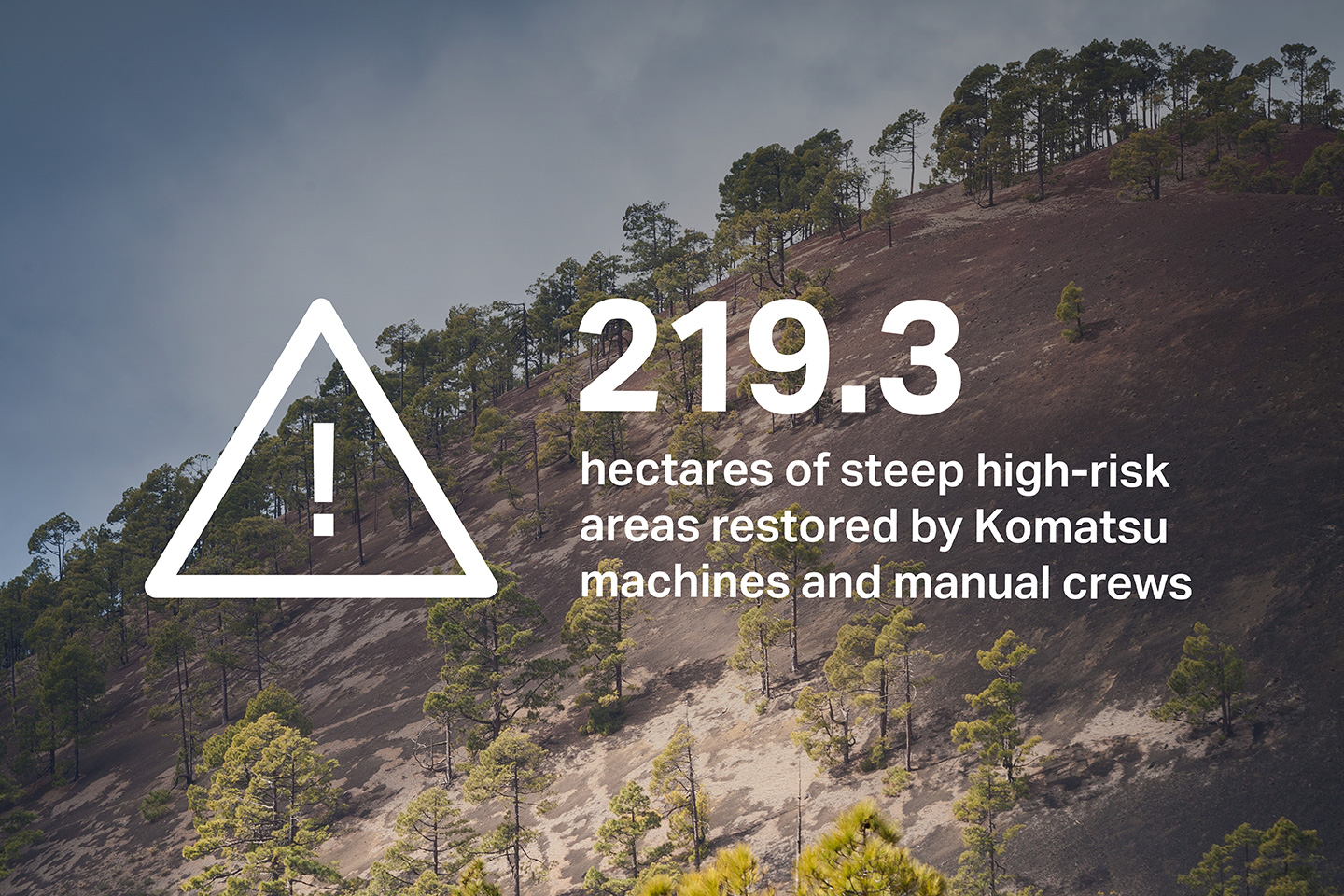
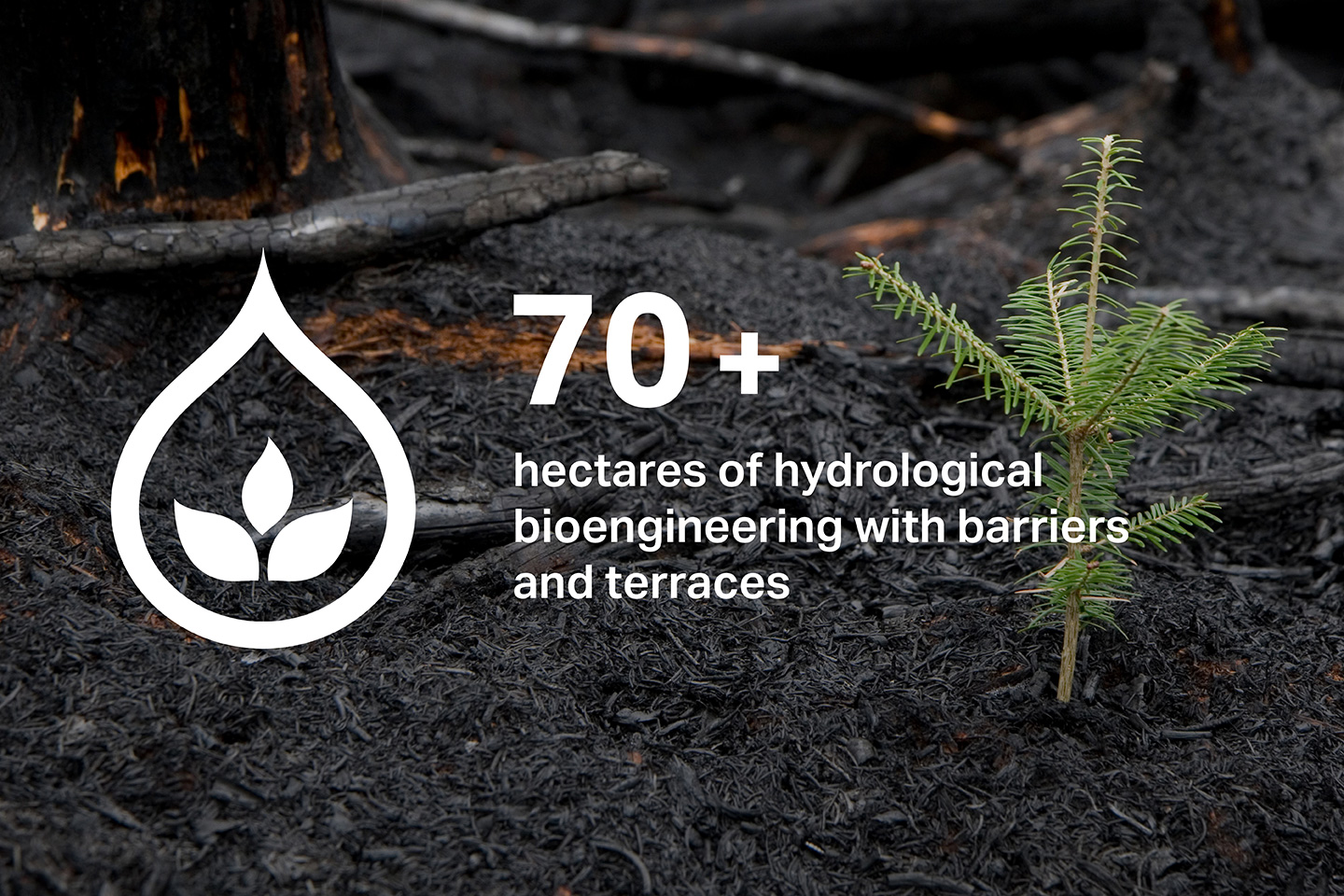
Long-term protection
Today, those same machines are part of the island’s long-term strategy to prevent future wildfires. Komatsu’s harvester and forwarder are used to thin overcrowded tree stands — reducing fuel buildup, improving tree health and making the forest more resilient to drought and fire.
One species of pine, the Pinus canariensis, is key to the island’s ecological recovery. Unlike other pine, it is fire adapted. It resprouts after burning thanks to thick bark protecting its core and deep roots holding the soil. Carefully reintroducing it is a cornerstone of Tenerife’s long-term resilience strategy.
In some areas, restoration meant planting by hand. In others, it meant allowing surviving vegetation to recover naturally, with light management and protection. Everything is done with the goal of rebuilding ecosystems, not just replacing trees..
Today, those same machines are part of the island’s long-term strategy to prevent future wildfires. Komatsu’s harvester and forwarder are used to thin overcrowded tree stands — reducing fuel buildup, improving tree health and making the forest more resilient to drought and fire.
One species of pine, the Pinus canariensis, is key to the island’s ecological recovery. Unlike other pine, it is fire adapted. It resprouts after burning thanks to thick bark protecting its core and deep roots holding the soil. Carefully reintroducing it is a cornerstone of Tenerife’s long-term resilience strategy.
In some areas, restoration meant planting by hand. In others, it meant allowing surviving vegetation to recover naturally, with light management and protection. Everything is done with the goal of rebuilding ecosystems, not just replacing trees..


